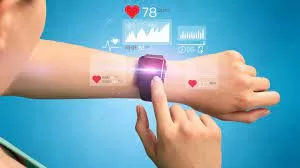
A groundbreaking advancement in wearable technology has emerged from a team of researchers at the University of Arizona, presenting a monitoring device system capable of transmitting health data astonishingly far—up to 24 kilometers—without relying on extensive infrastructure, outstripping the range of conventional Wi-Fi or Bluetooth systems.
The innovation, set to be published in the journal Proceedings of the National Academy of Sciences, is hailed for its potential in democratizing access to digital health resources, enabling equitable health monitoring even in remote or underserved communities.
The wearable device, coupled with its communication system, holds promise for diverse applications, ranging from supporting remote monitoring in rural regions with limited access to medical facilities to ensuring precise data recording in conflict zones and bustling urban centers.
Philipp Gutruf, an assistant professor of biomedical engineering, highlighted the limitations of existing non-invasive wearable devices, emphasizing their reliance on internet connectivity and mainline power sources. Such dependencies often leave individuals in remote or resource-constrained environments underserved.
Addressing these challenges, the Gutruf Lab developed a cutting-edge system harnessing a low power wide area network (LPWAN), specifically employing LoRa, a patented type of LPWAN technology. This system exhibits a remarkable reach, boasting 2,400 times the distance coverage of Wi-Fi and 533 times that of Bluetooth, enabling extended data transmission without the constraints of conventional connectivity.
Tucker Stuart, a doctoral alumnus in biomedical engineering, emphasized how the utilization of LoRa technology overcomes prior obstacles related to power and electromagnetic limitations, marking a significant leap forward in wearable health monitoring systems.
One of the device’s standout features is its ability to sustain continuous operation for weeks through wireless power transfer, enabling interaction-free recharging—an innovation poised to revolutionize health monitoring by ensuring prolonged and uninterrupted data collection.
The research team’s breakthrough not only propels the boundaries of wearable technology but also holds promise in reshaping healthcare accessibility, heralding a future where health data transmission spans unprecedented distances, transcending the limitations of infrastructure-dependent monitoring systems.










